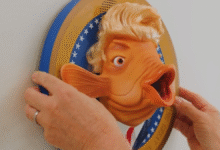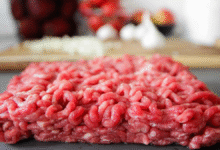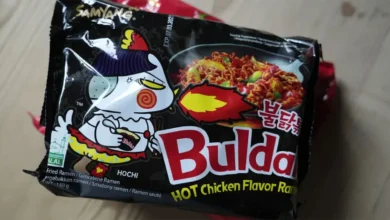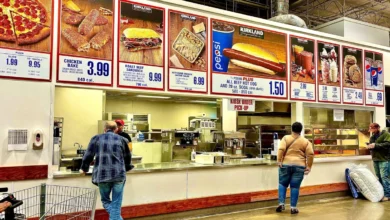Fast Food Mascots: The Faces Behind the Fries
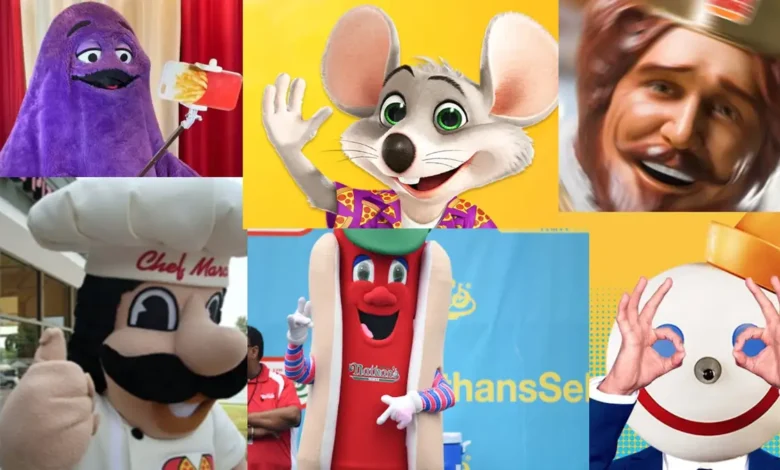
Explore the world of fast food mascots — their history, cultural impact, psychology, and why they still matter in today’s digital world. Nostalgic, quirky, and iconic.
Fast food mascots aren’t just characters; they are cultural icons. They’re the colorful, quirky, sometimes downright bizarre personalities that represent some of the biggest names in the fast food world. Whether you’re reminiscing about a clown with red hair or a king with an unsettling smile, these mascots have shaped our perception of fast food over the decades.
In this article, we’re diving deep into the world of fast food mascots. We’re talking history, psychology, branding, popularity, controversies, and why these characters still matter in a world dominated by digital advertising. So, buckle up for a flavorful ride.
The History of Fast Food Mascots
Fast food mascots have a long, fascinating history that dates back to the early days of the fast food boom. In the ’50s and ’60s, as fast food chains began spreading across America, they needed something that stood out — something memorable. Enter the mascots.
One of the earliest and most iconic mascots was none other than Ronald McDonald, who made his debut in the 1960s. Created to appeal to kids, Ronald helped make McDonald’s synonymous with family fun. Other chains quickly caught on. Characters like the Burger King, the Noid, and Jack from Jack in the Box soon followed, each offering a unique brand identity and appeal.
Over the years, these characters have evolved. Some have been redesigned to match modern tastes, while others have been retired entirely. Yet the essence of using mascots to create brand loyalty and recognition has remained a central strategy.
Why Fast Food Mascots Work
The effectiveness of fast food mascots lies in their psychological impact. Humans are wired to connect with faces and personalities. When a brand gives you a mascot, they’re essentially handing you a friend — one who’s always smiling, always upbeat, and always ready to serve your cravings.
Mascots humanize the brand. They turn a logo into a personality, a commercial into a story. This emotional connection often begins in childhood and extends into adulthood. Think about how many people still feel nostalgic seeing Ronald McDonald or the Kool-Aid Man bursting through walls.
The genius of fast food mascots also lies in their versatility. They can be funny, creepy, cool, or downright odd. But most importantly, they’re memorable. In an age of endless scrolling and fleeting attention spans, memorability is priceless.
The Most Iconic Fast Food Mascots
Certain mascots stand head and shoulders above the rest — figuratively and sometimes literally. These characters are not only tied to their brands but have become pop culture staples in their own right.
Ronald McDonald is undoubtedly the king of fast food mascots. With his red hair, oversized shoes, and signature striped outfit, Ronald was designed to be a friend to children. McDonald’s even created the Ronald McDonald House Charities, reinforcing his image as a benevolent figure.
The Burger King, with his eerie plastic smile and royal attire, has undergone several transformations over the years. Originally a cartoon, he later became a live-action mascot known for surreal, often bizarre commercials that appealed to a more ironic and adult audience.
Wendy from Wendy’s is a more subtle mascot, modeled after the founder’s daughter. Her freckled face and red pigtails are iconic, and her presence has been amplified in recent years with a snarky Twitter persona that resonates with younger audiences.
Other notable mentions include Jack (Jack in the Box), The Noid (Domino’s Pizza), and Chester Cheetah (Cheetos, often lumped in with fast food). Each one brought something unique to the table, whether it was humor, chaos, or sheer quirkiness.
How Mascots Influence Consumer Behavior

Fast food mascots do more than just sit pretty on TV screens. They subtly and effectively shape consumer behavior. When a mascot resonates with an audience, it can influence where people choose to eat — especially kids.
Studies show that children are more likely to choose a food product with a mascot they recognize. It’s the power of familiarity and perceived trust. A smiling character on the packaging creates a sense of comfort and reliability, even if the consumer knows nothing about the actual food.
Adults aren’t immune to this influence either. Nostalgia plays a big role. Mascots remind us of our childhood, of birthday parties at fast food joints, and of simpler times. This emotional tug can make a brand feel like an old friend, nudging us to choose it over newer competitors.
Mascots in the Digital Age
You might think that mascots have lost their touch in a world obsessed with influencer marketing and TikTok trends. But in reality, many fast food mascots have adapted beautifully to the digital age.
Social media has breathed new life into old mascots. Wendy’s, for example, has become famous for its witty, sometimes savage tweets. The brand has turned its mascot into a digital influencer of sorts, interacting with fans, roasting competitors, and staying top-of-mind.
Even classic characters like Ronald McDonald have found their place in online campaigns, memes, and nostalgia-based advertising. And let’s not forget the rise of brand crossovers and collaborations, where mascots appear in video games, animations, and even fashion.
Fast Food Mascot Controversies
Not every mascot moment has been golden. Some fast food mascots have found themselves in hot grease over the years.
Ronald McDonald, for instance, faced backlash during growing concerns about childhood obesity. Critics argued that using a clown to market fast food to kids was unethical. As a result, McDonald’s quietly scaled back Ronald’s visibility.
The Noid, Domino’s once-beloved mascot, was retired after a tragic incident involving a man who believed the commercials were targeting him personally. Though the mascot was later brought back, the story highlights the unpredictable impact of advertising.
Then there are mascots that simply missed the mark. Campaigns that tried too hard to be edgy, cool, or ironic often fell flat, making brands seem out of touch rather than trendy. The line between memorable and cringeworthy can be razor-thin.
Fast Food Mascots Around the World
While many of us are familiar with the American lineup of mascots, fast food mascots aren’t just a U.S. phenomenon. International fast food chains have their own roster of characters that are equally beloved.
In Japan, you’ll find a surprising number of cute and quirky mascots representing everything from fried chicken to ramen. One example is the popular Hokka Hokka Tei bear mascot, which resonates deeply with families and children.
McDonald’s has adapted Ronald and friends differently across cultures. In Latin America, for example, the tone of advertising featuring Ronald tends to be warmer and more family-oriented, while in Europe, campaigns may emphasize whimsy and surrealism.
Understanding how different cultures interact with mascots reveals a lot about regional branding strategies and the global appeal of fast food.
The Decline and Comeback of Fast Food Mascots
There was a period when mascots seemed to vanish from the fast food scene. Brands opted for sleek, modern aesthetics over cartoony characters. The trend shifted towards lifestyle branding, health-conscious marketing, and minimalism.
But mascots are making a comeback — and not just because of nostalgia. Brands are realizing that in a crowded market, personality still sells. A quirky mascot stands out far more than a minimalist logo.
The revival is also driven by social media, where mascots can develop their own voice and interact in real-time. People don’t just want to see ads; they want to engage with personalities. That’s something only a mascot can truly deliver.
Fast Food Mascots and Kids: Ethics and Marketing
One of the most debated aspects of fast food mascots is their appeal to children. Critics argue that mascots exploit young minds by associating fun and joy with unhealthy food.
This concern has led to some changes. McDonald’s, for instance, reworked Happy Meal offerings to include healthier options. Many brands have also placed limits on how mascots are used in advertising aimed at kids.
Still, mascots remain a staple in kids’ meals and branding because they work. The challenge lies in striking a balance between ethical marketing and brand identity. Some experts argue for a new generation of mascots that promote active lifestyles and better food choices.
The Cultural Impact of Fast Food Mascots

Beyond the burgers and fries, fast food mascots have left a lasting impact on pop culture. They’ve appeared in movies, video games, comic books, and even political satire.
Who could forget the viral memes starring the Burger King or the Halloween costumes based on Taco Bell’s talking Chihuahua? These characters have become larger than life, transcending their original purpose to become icons.
Fast food mascots also reflect societal changes. As consumer expectations shift, so do the characters. From their design to their messaging, mascots offer a lens through which we can view changing attitudes toward food, health, and marketing.
Table: Notable Fast Food Mascots and Their Traits
| Mascot | Brand | Personality Traits | First Appearance |
|---|---|---|---|
| Ronald McDonald | McDonald’s | Friendly, clownish, playful | 1963 |
| The Burger King | Burger King | Eccentric, regal, surreal | 1950s (revived in 2004) |
| Wendy | Wendy’s | Honest, snarky, wholesome | 1969 |
| Jack Box | Jack in the Box | Cool, witty, sarcastic | 1990s |
| The Noid | Domino’s Pizza | Mischievous, chaotic | 1986 |
Quotes About Fast Food Mascots
“Mascots aren’t just marketing tools — they’re storytellers with fries.”
— Anonymous Brand Strategist
“We remember characters more than commercials. That’s the power of a mascot.”
— Marketing Week
FAQs About Fast Food Mascots
Q: Why are fast food mascots important?
A: They help humanize brands, create emotional connections with customers, and improve brand recognition, especially among children and nostalgic adults.
Q: Do all fast food brands use mascots?
A: Not all, but many do or have at some point. Some brands opt for minimalist branding instead, but mascots often provide a unique advantage in engagement.
Q: Are fast food mascots just for kids?
A: While many are designed to appeal to children, mascots often target adults as well — especially through humor, nostalgia, or social media engagement.
Q: Have any mascots been retired?
A: Yes, several, including the Noid (though he made a comeback), Grimace’s family members, and early versions of the Burger King.
Q: Can fast food mascots evolve over time?
A: Absolutely. Many have undergone design and personality changes to stay relevant with changing consumer tastes and social trends.
Conclusion: Why Fast Food Mascots Still Matter
Fast food mascots are more than just smiling faces — they’re an essential part of the fast food experience. They connect generations, evoke nostalgia, and provide brands with a unique voice in an increasingly noisy world.
As marketing continues to evolve, these mascots are proving they’re more than relics of the past. They’re adaptable, influential, and just as important in the digital age as they were in the golden age of television. So next time you see a mascot, remember — there’s a lot more behind that smile than meets the eye.
